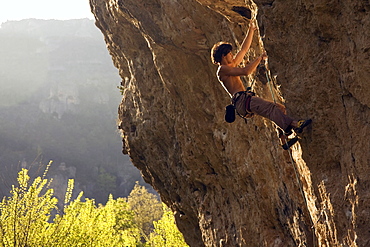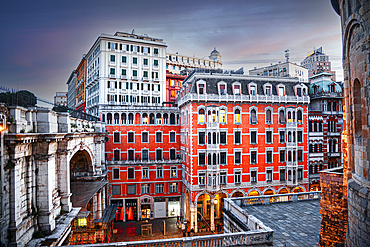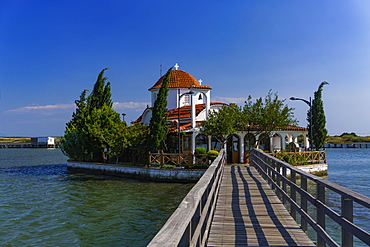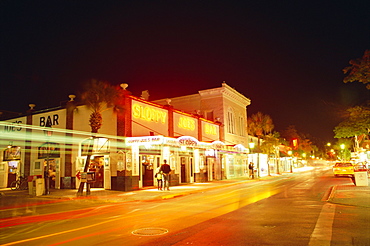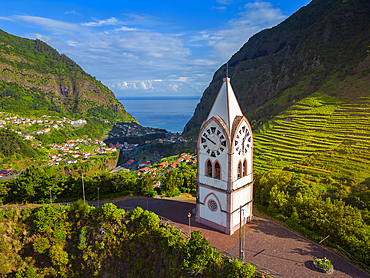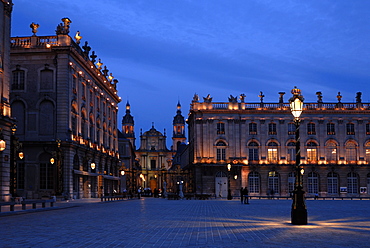Recent searches
Loading...
1383-58 - The Kulamba Traditional Ceremony of the Chewa people takes place every year on the last Saturday in August near Katete. The Chewa who also live in Mozambique and Malawi come to pay homage to their Chief Kalonga Gaia Uni.
1382-58 - terraces of cafe on Dome Square by night,Old Town,Riga,Latvia,Baltic region,Northern Europe
1384-58 - Former church Spanish architecture, Ex-Templo de San Jose built 1716, Campeche city, Campeche State, Mexico
738-58 - Panoramic view, corn marigolds, Fair Isle, Shetland Islands, Scotland, UK, Europe
607-58 - African elephant, Kruger National Park, South Africa, Africa
681-58 - Exterior of a stone farmhouse in vineyard near Pierrefeu, Var, Provence, France, Europe
701-58 - Aerial view over boats moored off a beach below the Petit Piton, St Lucia
744-58 - Alabaster boat showing the head of a Syrian ibex and a figure thought to be princess Mutnedjmet on the prow, from the tomb of the pharaoh Tutankhamun, discovered in the Valley of the Kings, Thebes, Egypt, North Africa, Africa
759-58 - lionfish, turkeyfish, Pterois volitans, Mauritius, Indian ocean
1196-58 - A young sadhu reads holy scripture near fire. Worship is part of daily life. Some sadhus chant mantras. gayatri mantra is of several mantras that sacred incantations or mystical formulas of ancient literature. gayatri mantra given by brahma mentioned in rigveda is named after consort of brahma: o that glory- of savitri most high. Oh divine us mediate upon. it inspire understanding. goal of recitation is to attain realization. Practice lead mind into a transcendental union with deity.Pashupatinath, kathmandu, nepa
793-58 - Stonehenge, UNESCO World Heritage Site, Salisbury Plain, Wiltshire, England, United Kingdom, Europe
357-58 - Man sitting in shikara, Dal Lake, Kashmir, India, Asia
795-58 - Jetty leading out to tropical sea, Maldives, Indian Ocean, Asia
1314-58 - Split view of female tourist snorkelling underwater and landscape of St. Pierre Island coral reef, Seychelles, Indian Ocean, Africa
802-58 - A climber tackles a very difficult route on the rock known as Dromadaire (The Dromedary) by the Tarn river, Gorges du Tarn, near Millau and Rodez, Massif Central, south west France, Europe
1104-58 - Museum of Islamic Art, Doha, Qatar, Middle East
826-58 - The Herbert Baker designed North Block Secretariat Building in New Delhi, India, Asia
1163-58 - Locals celebrate Thai New Year by throwing water at one another, Songkran water festival, Chiang Mai, Thailand, Southeast Asia, Asia
1161-58 - A holy man crouching at the Pashupatinath Temple on the Bagmati River in Nepal. It is one of the holiest Hindu Temples in the world.
832-213372 - Hands of a potter, 58, in Dunjarpur, forming a piece of pottery on the potter's wheel, Rajasthan, India, Asia
1131-58 - Two Surma men with scarification, Tulgit, Omo River Valley, Ethiopia, Africa
938-58 - Polar bear (Ursus maritimus) and cubs, Wapusk National Park, Churchill, Hudson Bay, Manitoba, Canada, North America
817-410339 - Olive baboon, Papio Anubis, Olive baboons are widespread throughout equatorial Africa and are found in 25 countries. From the west coast of Africa moving eastward. In the picture there is a mother with a juvenile, the mother is eating some grass and the s. Olive baboon, Papio Anubis, Olive baboons are widespread throughout equatorial Africa and are found in 25 countries. From the west coast of Africa moving eastward. In the picture there is a mother with a juvenile, the mother is eating some grass and the small one is in its back. In Uganda, olive baboons live in open woodland bordered by savannah and in evergreen tropical forests At Queen Elizabeth National Park, situated in Uganda, near the border of Democratic Republic of Congo, the habitat is characterized by dense forest, coarse wet grass, short grass and open grassland. Olive baboons consume a wide variety of foods and they can adapt to very different kind of habitats, from desert to mountain forest because they have many different strategies and habilities to extract food and nutrients. Baboons are omnivores and consume a huge variety of vegetables, insects, birds, eggs, and vertebrates including other primates. The Olive Baboon is one of the largest baboons, with the males being larger than the females. Their body length is 60, 86 cm, their tail length is 41, 58 cm and they weigh between 22 and 37 Kg. There is some geographical variation in average size. They have an olive green/grey coat that covers their bodies and a black face. The males have large canine teeth where as the teeth of females are much smaller. They move around on all four limbs. They live in troops of males and females that consist of between 20 and 50 members. The picture was taken in Ugande, in the Queen Elizabeth National Park, near the Kazinga channel., Uganda, Africa, East-africa
987-58 - domesticated sheep: ovis aries black faced ram highlands, scotland
975-58 - An IDP camp (internally displaced people) in Amuru district of Northern Uganda has been created to accommodate the mass of Ugandan refugees fleeing the LRA (Lords Resistance Army) who are fighting the Ugandan government and its people. Inside one of the classrooms, the children are more interested in the camera than study. Amuru, Uganda, East Africa
1031-58 - Orkney Islands Sept 2011 Wave and Tidal Power shoot - Tidal Generation Limited - backed by Rolls Rpyce -TGL is are currently operating a 500kWe concept demonstrator unit at The European Marine Energy Centre (EMEC) Tidal site in Orkney. This has been generating since September 2010 and provides power for up to 300 homes.
911-10807 - The old whaling station at Grytviken on South Georgia. In its 58 years of operation, it handled 53,761 slaughtered whales, producing 455,000 tons of whale oil and 192,000 tons of whale meat.
1188-58 - India. Vegetable vendor in colaba market, mumbai
1228-58 - Misty daybreak over Loch Rusky in May, Aberfoyle, The Trossachs, Scotland, United Kingdom, Europe
1286-58 - Edinburgh from Calton Hill, Edinburgh, Lothian, Scotland, United Kingdom, Europe
1231-58 - A view of the city at dusk. Genoa, Liguria, Italy, Europe.
627-58 - Triplet Falls, Otway National Park, Victoria, Australia
1278-58 - Greek Orthodox church at lagoon, Porto Lagos village pilgrimage of St. Nicholas, metochi of Athos Monastery in Vatopedi, Greece, Europe
1171-58 - Mufu with surrounding Old Town, UNESCO World Heritage Site, as seen from a raised vantage point, Lijiang, Yunnan, China, Asia
1213-58 - Wreckage of a United States Navy Douglas Super DC-3 that crashed on the black beach at Solheimasandur, South Region, Iceland, Polar Regions
911-10804 - An abandoned whaling boat with a harpoon on its bow at the old whaling station at Grytviken on South Georgia. In its 58 years of operation, it handled 53,761 slaughtered whales, producing 455,000 tons of whale oil and 192,000 tons of whale meat.
1015-58 - Nudibranch (Hyselodoris bullockii). Indo Pacific:Papua New Guinea
1176-58 - Pelourinho with Our Lady of the Rosary of Black People (Nossa Senhora do Rosario dos Pretos), UNESCO World Heritage Site, Salvador, Bahia, Brazil, South America
1249-58 - Portrait of an African lion (Panthera leo), Serengeti National Park, Tanzania, East Africa, Africa
1372-58 - Beautiful Hakamagoshi Bridge on Lake Onuma on a vibrant autumn day, Hokkaido, Japan, Asia
800-58 - Tung Wan Beach, Cheung Chau, Hong Kong, China, Asia
817-411533 - Naha, Okinawa, Japan, the big rope along the Route 58 during the Tug of war Festival, October
1238-58 - Weeping cherry blossoms, Taizo-in temple, Kyoto, Japan, Asia
1376-58 - UK Weather: Sleet and snow showers from Furness Abbey, Barrow In Furness, Cumbria, Furness Peninsula, UK.
1369-58 - Aerial view of Capelinha de Nossa Senhora de Fatima at sunrise, Sao Vicente, Madeira, Portugal, Atlantic, Europe
1219-58 - The last rays of the setting sun strike the peak of Aoraki (Mount Cook) beyond the shores of Lake Pukaki in the Southern Alps, UNESCO World Heritage Site, Canterbury, South Island, New Zealand, Pacific
1311-58 - The Watson Dam Spillway, the small dam holds back Watson Lake in Prescott, Arizona, United States of America, North America
1067-58 - Blue seastar, Linckia laevigata, hanging on a boulder coral, Porites sp. Buyat Bay, North Sulawesi, Indonesia, Pacific Ocean.
911-10805 - The old whaling station at Grytviken on South Georgia. In its 58 years of operation, it handled 53,761 slaughtered whales, producing 455,000 tons of whale oil and 192,000 tons of whale meat.
1373-58 - View of the Franklin D. Roosevelt Four Freedoms Park, a memorial to Franklin D. Roosevelt that celebrates the Four Freedoms articulated in his 1941 State of the Union address, Roosevelt Island, New York City, United Statess of America, North America
799-58 - Looking towards Widecombe from Bonehill Rocks, Dartmoor National Park, Devon, England, United Kingdom, Europe
1185-58 - White-fronted bee-eater (Merops bullockoides), South Luangwa National Park, Zambia, Africa
1341-58 - Taj Mahal, UNESCO World Heritage Site, Agra, Uttar Pradesh, India, Asia
821-58 - Antiques for sale, Les Puces de Saint-Ouen Flea Market, Porte de Clignancourt, Paris, France, Europe
792-58 - Evening floodlit view of Place Stanislas and the cathedral, UNESCO World Heritage Site, Nancy, Lorraine, France, Europe
940-58 - Pitcher plant (Nepenthes sp.), Kuala Lumpur Orchid Garden (Taman Orkid), Kuala Lumpur, Malaysia, Southeast Asia, Asia
979-4423 - Adult Southern Rockhopper Penguins (Eudyptes chrysocome chrysocome) in the Falkland Islands. This is the smallest yellow-crested, black-and-white penguin in the genus Eudyptes. It reaches a length of 45-58 cm (18-23 in) and typically weighs 2-3.4 kg (4.4-7.5 lb), although there are records of exceptionally large rockhoppers weighing 5 kg (11 lbs). Their common name refers to the fact that unlike many other penguins which negotiate obstacles by sliding on their bellies or by awkward climbing using their flipper-like wings as aid, Rockhoppers will try to jump over boulders and across cracks. This behavior is by no means unique to this species however - at least the other "crested" penguins of the genus Eudyptes hop around rocks too. Southern Rockhopper Penguins have a global population of roughly 1 million pairs, perhaps a bit more. About two-thirds of the global population belongs to E. c. chrysocome which breeds on the Falkland Islands and on islands off Argentina and southern Chile. The Southern Rockhopper Penguin is classified as Vulnerable species by the IUCN.
1315-58 - Feeding a giraffe in Nairobi, Kenya, East Africa, Africa
743-58 - Lion cub, Panthera leo, approximately two to three months old, Kruger National Park, South Africa, Africa
1264-58 - Band in Signoria Square (Piazza Grande) during Ceri Festival, Gubbio, Umbria, Italy, Europe
1269-58 - Sunset from the famous bell tower of Curon Venosta, Resia Pass, South Tyrol, Italy, Europe
1287-58 - Male Red Grouse on the spring snowfields above Glenshee looking for food, Scottish Highlands, United Kingdom, Europe
1265-58 - Traditional Greek village of Oia, Santorini, Cyclades, Greek Islands, Greece, Europe
829-58 - People riding a roller-coaster, Tivoli Gardens Amusement Park, Copenhagen, Denmark, Scandinavia, Europe
848-58 - Santa Cruz La Laguna, Lake Atitlan, Western Highlands, Guatemala, Central America
939-58 - Whale shark (Rhincodon typus) vertical suction feeding on a shoal of red fish, Honda Bay, Palawan, The Philippines, Southeast Asia, Asia
1158-58 - Ait Benhaddou, UNESCO World Heritage Site, Atlas Mountains, Morocco, North Africa, Africa
908-58 - Dusky Grouper (Epinephelus marginatus) with Diver.
Sardinia, Italy
Restricted resolution (Please contact us). (RR)
1241-58 - Sunrise at Kirkjufell Mountain, Snaefellsnes Peninsula, Iceland, Polar Regions
1132-58 - Country road, Yorkshire Dales National Park, Yorkshire, England, United Kingdom, Europe
817-411540 - Naha, Okinawa, Japan, Okinawan men along the Route 58 during the Tug of war Festival, October
844-58 - View of the town of Cadenabbia from ferry, Lake Como, Lombardy, Italian Lakes, Italy, Europe
1262-58 - Wat May Temple, Luang Prabang, Laos, Indochina, Southeast Asia, Asia
1102-58 - Panoramic of Surf Lifesaving contest, Manly Beach, Sydney, New South Wales, Australia, Pacific
1366-58 - Faiyum, Egypt. February 19, 2022. Making potter at a shop in Faiyum.
915-58 - Bladder Wrack, Fucus vesiculosus, Angle Bay, Milford Haven, Pembrokeshire, Wales, UK, Europe
1284-58 - Cypress trees and green fields in the afternoon sun at Agriturismo Terrapille (Gladiator Villa) near Pienza in Tuscany, Italy, Europe
1216-58 - Loch Rusky, Perthshire, Scotland, United Kingdom, Europe
1209-58 - Bluebells, High Littleton Woods, Somerset, England, United Kingdom, Europe
849-58 - Looking across the font of Salisbury cathedral, Wiltshire, England, United Kingdom, Europe
1194-1146 - Zambia rita hamusokwe (58), farmer of chikwela village, chongwe, cultivating her field
1275-58 - Winter landscape with wild elk in the Banff National Park, UNESCO World Heritage Site, Alberta, Canadian Rockies, Canada, North America
1350-58 - This is the nebula rich region in the constellation of Monoceros the Unicorn with the dark Cone Nebula (left of centre) and the small V-shaped and bright Hubble's Variable Nebula at bottom, a reflection nebula that varies in form and brightness. Above the Cone Nebula is the triangular Christmas Tree Cluster, NGC 2264, here upside down as the bright blue star 15 Mon is the base of the tree. The large region of nebulosity is Sharpless 2-273. The V-shaped dark nebula above centre is LDN 1603.
755-58 - Panorama of chaityas at dawn, at one of the holiest Hindu sites, Pashupatinath, Kathmandu, Nepal, Asia
762-58 - Schloss Linderhof, between Fussen and Garmisch-Partenkirchen, Bavaria (Bayern), Germany, Europe
1167-58 - Close up of head of Gentoo penguin (Pygoscelis papua), the Neck, Saunders Island, Falkland Islands, South America
846-58 - Mermaid Inn, Mermaid Street, Rye, East Sussex, England, United Kingdom, Europe
847-58 - Looking towards Roseberry Topping and Cleveland from Busby Moor, North Yorkshire Moors, Yorkshire, England, United Kingdom, Europe
978-58 - Redmouth Grouper (Aethaloperca rogaa). So named because of its bright red inside mouth.Red Sea.
1202-58 - A view of the Titanic Museum, with the SS Nomadic, the only surviving White Star Line ship, in the Titanic Quarter, Belfast, Ulster, Northern Ireland, United Kingdom, Europe















